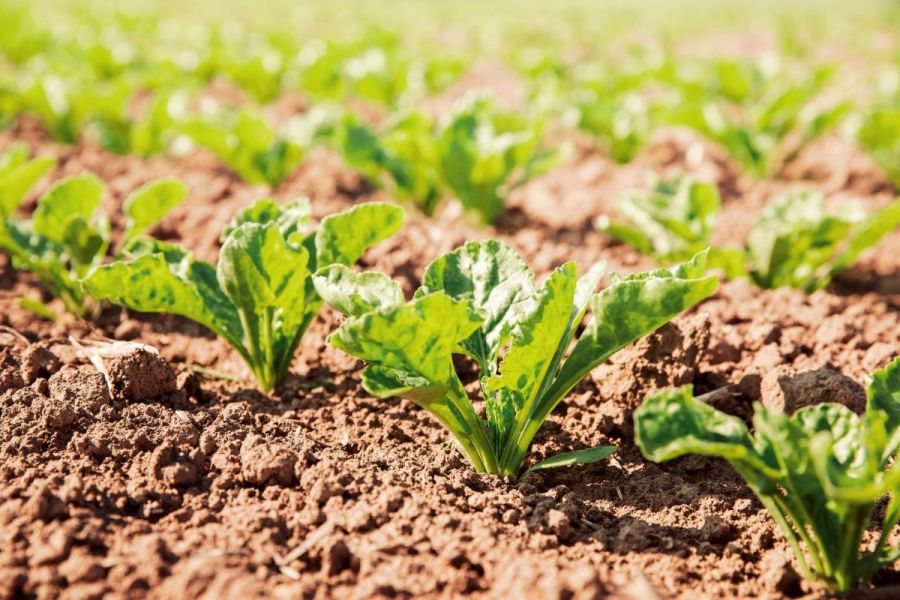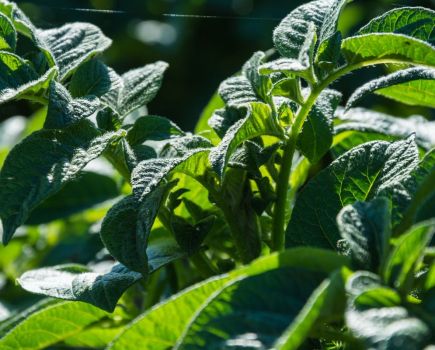With the lifting of current season sugar beet crops well underway, variety performance is under scrutiny as growers make decisions on what to sow this spring. CPM speaks to those in the know.
“I don’t think we’ll get to a position where Conviso varieties dominate the RL, but they’re useful in many different ways.”
By Martin Rickatson
While the way any crop looks through the growing season can have a strong correlation with yield, it’s only once it’s through the harvester that final judgements can be made on how a variety has performed overall.
As sugar beet lifting gets fully into its stride, growers committed to the crop and considering options for next season have not only current variety choice performance to bear in mind, but also the yield promise, disease resistance scores and other traits of alternatives on the Recommended List, including this year’s additions.
It’s a decision making process made perhaps more challenging by the expansion of an RL which for 2025 comprises 22 varieties, thanks to six additions. But given the breadth of challenges faced by beet growers, that’s a number which is well justified, believes Mike May, former chairman of the sugar beet RL committee, with involvement dating back to the 1980s.
“There was some concern back when we had 18 RL varieties that there were too many, but I think that as breeders develop and include traits to meet various beet-growing challenges, we may well go beyond 22.
“Beyond the stalwarts, life on the RL for a variety is 3-5 years, and the varieties we test are whittled down to around 15 by the last year of Variety List trials, with some withdrawn by their breeders and others rejected in our trials process.
“Most are fairly similar on sugar content and adjusted yield, and there’s more to variety performance than yield alone, so growers have to decide on their priority characteristics and assess the variety options that meet them,” he says.
According to Mike, the principle of variety inclusion on the RL has always been based on yield, but when he first became involved, more trials were undertaken as costs were lower and fewer varieties were coming forward.
“Now, there are more traits to assess and while that’s good, it does make things more complicated. A variety that’s not quite there on yield but offers another highly-desirable trait such as a particular disease resistance may well make it onto the RL as a result.”
All RL trial plots are treated exactly the same, using the standard treatments of the farmers hosting the trials, he explains.
“For consistency, this has to include conventional herbicide treatments on Conviso types, which makes distinct Conviso variety comparison difficult. The breeders therefore prove ALS tolerance before we accept a Conviso variety into RL trials.
“Relative yield performance will obviously depend on what a variety is being compared with. If that comparison is against conventional crops being treated with robust herbicides, crop damage can result, particularly if the weather isn’t ideal, and in such a case Conviso types would commonly outyield conventionals,” says Mike.
“But in most situations where growers are careful with herbicide choice and application, there would likely be a smaller difference. So we do rely on close dialogue with breeders to ensure we get that full Conviso data from them and from other trials.”
The development of further Conviso varieties will be a considerable help to the weed control challenges faced by some growers, he suggests. “But it’s essential to consider that the herbicide used to control weeds in a Conviso crop is an ALS type, so care is required to guard against resistance development across a rotation.
“The benefit of the weed control chemistry used traditionally in conventional varieties is that most have a different mode of action to herbicides used in other crops in the rotation.
“Therefore, I don’t think we’ll get to a position where Conviso varieties dominate the RL, but they are useful in many different ways, particularly for weed beet and for growers who face considerable time pressures in spring. If we’re to benefit long-term from Conviso technology, good stewardship – including bolter removal – is essential,” he stresses.
Farm and field circumstances will naturally have a significant bearing on the breadth of variety choice a grower has, suggests Mike.
“If you have land with beet cyst nematode your choice is immediately narrowed to tolerant types, for example, but thanks to the breeders those options are available and yield well.”
With the RL trials being based on standard field circumstances, disease ratings can be based only on the disease pressure seen across the five trials sites, he adds.
“But the breeders place considerable focus here. In addition to rust and mildew resistance, cercospora incidence is growing in the UK, but as it’s been a major issue on the continent for some time, we’ll benefit from the tolerant varieties coming through from European breeders. The first of those, Chyma KWS, is on the 2025 list.”
Before varieties can be sold or considered for the RL, the Animal and Plant Health Agency (APHA) assesses those put forward by breeders for varietal listing, in a process which has superseded the former National List procedure.
Data from these trials is submitted and used by the RL committee; harvesting of both sets of trials starts in early September with the VL trials completed by mid-October and the RL by the end of November. This is to ensure data can be processed before the year-end in time for assessment ahead of the following season’s RL trials, allowing breeders sufficient time to prepare seed supplies.
The RL system has traditionally been based on genetic performance but as it evolves, the RL varieties growers purchase will be ever closer to what’s been tested in the RL, says Mike. “For example, in 2021 we changed to seed pelleted with the grower’s chosen pelleting. For 2025, trial varieties drilled will receive an advanced treatment, as most commercially-drilled beet seed does.”
With three withdrawals and six additions, the 2025 RL offers a choice of 22 varieties. They include the first cercospora-tolerant variety, Chyma KWS, which incorporates CR+ genetics. Unsuited to early sowing and with lower than average rust and powdery mildew scores, it has an adjusted tonnage yield performance compared with controls of 101.0% at 16.9% sugar.
From the same breeder, Josephina KWS has a yield rating of 99.5% adjusted tonnes but at 17.3% sugar, offers the highest content on the RL. It also produced the fewest bolters in early sown bolter trials.
Although it produced a lower establishment population than the other varieties, ST Tweed from Strube produced 98.2% adjusted tonnes at 17.0% sugar. The same breeder’s ST Trent produced 97.7% adjusted tonnes at 17.2%, the second highest sugar yield on the list. Meanwhile, Magpie from SesVanderHave produced 97.7% adjusted tonnes at 17.1% sugar.
The final addition is the ALS-tolerant Smart Uma KWS. Its yield in the RL trials (treated with non-ALS herbicides) was 95.3% adjusted tonnes at 17.1% sugar, with the RL committee acknowledging that ALS-tolerant varieties are likely to produce higher yields when used with their partner ALS herbicides than with conventional products.
Beyond specific trait requirements, growers should first split their variety choices into those which can and can’t be drilled before mid-March, depending on how early they wish to lift their first beet and have ground clear for following crops, suggests Georgina Barratt, BBRO applied crop scientist.
“If something isn’t working well for you, identify the reasons and look for varieties with traits and performances that address them,” she says.
Those marked with a red cross will produce high bolter numbers if sown too soon and are unsuited to drilling early, explains Georgina. “These include BTS 1915, which has become the market stalwart, joining the RL in 2020. It yields well at 102.2% and 16.9% sugar, forms a tall canopy with long petioles, and its foliage has good rust resistance, but is slightly less repellent of powdery mildew.
“Look at disease scores and relate them to the pressures typically faced in your own fields, considering where your different varieties are during the season, and your predominant diseases.
“Bear in mind that some high yielding varieties score quite low on certain diseases. If you plan to lift some of your crop later, strong scores and a canopy that stands well post-Christmas – soil fertility may also have an impact here – are especially important to support fungicide programmes.”
Conversely, varieties offering higher sugar content suit planned early lifting or drought-prone land, helping to optimise adjusted tonnage returns, adds Georgina. Although data for ‘new’ diseases like cercospora is still being developed.
“However, growers with cercospora concerns can use the BBRO cercospora monitoring platform and link this with variety performance on-farm. The introduction of Chyma KWS offers a new option if you grow beet in high humidity situations where wet canopies can develop and risk of cercospora development is therefore higher, with three or four fungicide applications necessary.”
In terms of other disease traits, Maruscha KWS offers beet mild yellowing virus resistance, and there’s some evidence that it performs slightly better under beet yellows virus, she points out.
“Elsewhere, the development of beet cyst nematode-tolerant varieties has been really exciting. A strong trait often has to be balanced against lower yields, but that’s not the case with three of the four BCN varieties on the RL, underlining breeders’ efforts to combine the traits we want with the yields required.
“If you have fields with an identified BCN issue, these varieties offer an answer. As these new traits come into the market, there’s an obvious small amount of yield lag, but we’re now at the point where many are yielding just as well as any of the non-specialist trait varieties.”
Georgina adds that despite now being the longest-serving variety on the RL, Daphna from KWS, offers BCN tolerance with an adjusted yield of 101.3 and a sugar content of 16.9% – a welcome combination. “Its rust score is slightly lower than average but its powdery mildew score is slightly higher, while its foliage tends to be a little shorter, with a more prostrate growth habit.
“Another BCN-tolerant variety with exactly the same adjusted yield performance, Harryetta KWS, has lower rust resistance but a similar mildew rating. Katjana KWS is similar to Harryetta with a very slightly lower – but still above average – powdery mildew score,” lists Georgina.
In similar fashion to the way in which the varieties offering a combination of good yield performance and disease resistance have become established, varieties with traits like cercospora and BYMV resistance should soon come alongside fully competitive yields, she believes.
“In terms of other disease challenges, for growers aware they have the more aggressive strain of rhizomania on-farm, Osprey offers a management option as the only AYPR variety on the RL, but it yields well at 97.6t/ha adjusted.
“If seeking a weed management aid on problem land, the three Conviso Smart varieties – Smart Uma and Smart Vesnica from KWS plus BTS Smart 9485 from Betaseed – yield similarly on the RL, but bear in mind that for trial purposes this data comes from use of a conventional herbicide programme, not the Conviso One programme that would be used in practice.”
Georgina stresses that Conviso Smart varieties shouldn’t be drilled early and bolter control must be thorough. “This is valuable technology which requires good stewardship.
“As with any varieties possessing certain traits, those traits alone won’t solve a problem and have to be part of integrated management. But trying a new variety alongside ones which have performed well will also maintain genetic diversity and allow you to benefit from breeding progress,” she concludes.
This article was taken from the latest issue of CPM. For more articles like this, subscribe here.
Sign up for Crop Production Magazine’s FREE e-newsletter here.




